TAGGED AS: Fantasy, Prime Video, television, TV

(Photo by Prime Video)
Because of an odd quirk of The Lord of the Rings: The Rings of Power’s release and production schedule, Friday’s episode, “The Great Wave” serves as the midpoint of its first season. And as a series based on the works of J.R.R. Tolkien, it still feels like it is just beginning. A seeming alliance is made, a young man makes a fateful choice, and Arondir (Ishmael Cruz Cordova) meets the “father” of the Orcs.
Spoiler alert: The following contains plot points from episode 4 of The Lord of the Rings: The Rings of Power, “The Great Wave.” If you want to avoid spoilers, stop reading here. Some details from The Lord of the Rings Appendices are also included in this column and may be considered spoilers to those who haven’t read J. R. R. Tolkien’s books.
Although still very much the opening moments of the story — for a comparison, the first few chapters of The Lord of the Rings occur over the span of 17 years — these first four episodes have given viewers and Tolkien fans a lot to consider. So let’s look at what the program has offered so far, what it means to visit Númenór, and formally ask “Who is the Stranger?”
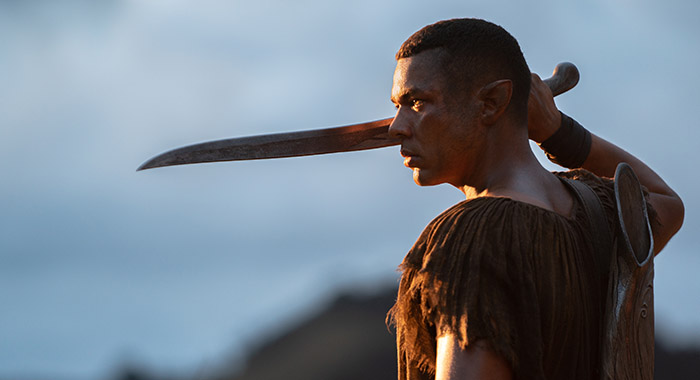
(Photo by Ben Rothstein/Prime Video)
Perhaps the most ominous aspect of episode 4 is the message Arondir (pictured) relays to the Men sheltering in Ostirith: give up all claim to the Southlands and submit to the rule of the Orcs’ master. While we know their commander is, ultimately, Sauron, the episode introduced a new member of the Enemy’s cabinet: Adar (Joseph Mawle). As mentioned in episode 3, “Adar” means “father” in the Sindarin language Arondir’s people speak — it is also a word the Orcs should not be using as their own language already emerged. But Adar’s sobriquet makes more sense once we see him: more Elf than Orc, but bearing scars on his face and the ravages of time.
The suggestion, at least as we see it, Adar is one of the first Orcs, if not the first. Going back to the lore, Tolkien described the Orcs as emerging from Elves captured by Morgoth who were then tortured and corrupted to serve in his armies. These poisoned Elves bred among themselves and gave rise to the Orc race. But like so much Tolkien devised, there is no long-form tale tied to the creation of the Orcs; no yarn of an Elf who wandered by mistake and became corrupted by the Dark Lord.
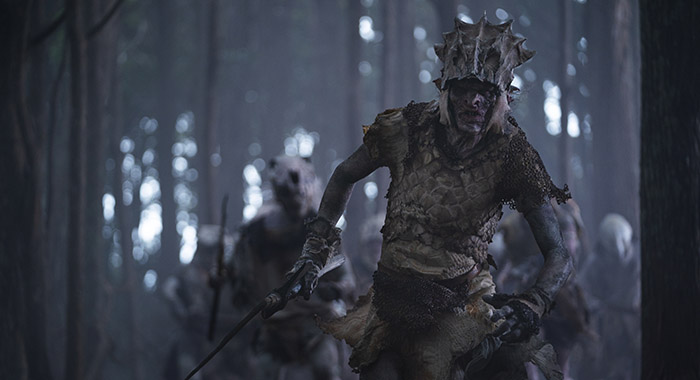
(Photo by Ben Rothstein/Prime Video)
Considering the amount of First Age lore seeping into the show’s dialogue, it is possible Adar will eventually recount how he came to be in the service of the Enemy — provided he is the first Orc, of course. It could be fascinating as Orcs tend to be nameless fodder for the heroes in Tolkien’s stories to cut through (Grishnákh, Azog, Bolg, and a few others notwithstanding) and lack the cultural exploration given to the other races of Middle-earth. Seeing Adar’s compassion alongside his pragmatism when killing one of the injured Orcs indicates we may get a better look at the Orc society than we’ve ever seen before.
Meanwhile, his offer to the Men at Ostirith cuts to the heart of Bronwyn’s (Nazanin Boniadi) goal to sever her people’s ties with their old oath to Morgoth. Will she be able to keep them from submitting out of fear? So far, the other villagers seem easily swayed by their emotions. We will be quite surprised if they decide to fight the Orcs in the next few episodes. Then again, there is a necessity in seeing some of the Men who sided with Morgoth and Sauron move beyond that choice.

(Photo by Prime Video)
The palantíri are some of the most remarkable objects in the whole of Middle-earth. Fashioned by the Elves in Valinor to act as both long range communication devices and diviners of the future, seven eventually make their way to Middle-earth. One ends up in Isengard with Saruman, one is ensconced in Minas Tirith with the Steward of Gondor, and one final palantír comes into Sauron’s possession. It is interesting, therefore, that Míriel (Cynthia Addai-Robinson) notes most of them are lost when she brings Galadriel (Morfydd Clark) to witness the vision Númenór’s remaining stone gives her and her father, who happens to be called Tar-Palantir (Ken Blackburn).
The vision all three see is seemingly clear: the White Tree will shed its petals and a great wave will consume Númenór. But as fans know of the palantíri, the vision could be misleading. For much of the episode, Míriel believes giving Galadriel any aid will lead to the calamity. And, for at least a moment, Galadriel also seems convinced she will cause the vision to become real if she persists. But just as the palantíri would cause Sauron to believe Pippin had the One Ring and Denethor to believe the Corsair ships would spell the ruin of all things, the flood glimpsed in the vision could be a metaphor, an inevitability, or the product of someone eavesdropping via another palantír.
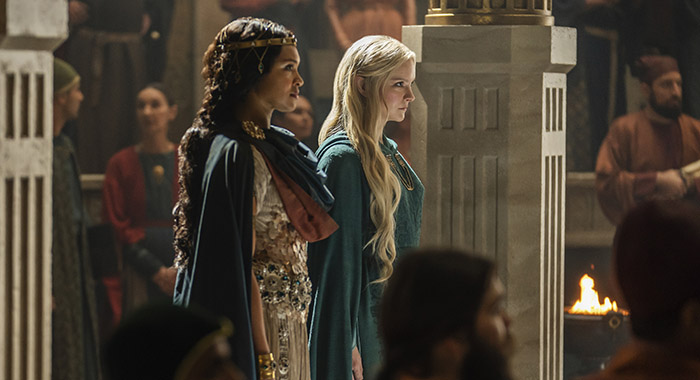
(Photo by Matt Grace/Prime Video)
Galadriel herself suggests this in a bit of dialogue that echoes her warning to Frodo and Sam thousands of years later when they look into her own prognosticating Mirror. And speaking of echoes, fans of The Lord of the Rings films will recognize Míriel’s vision as a dream Eowyn (Miranda Otto) recounts to Aragorn (Viggo Mortensen) in the Extended Edition of The Two Towers, which, in turn, is pulled from a dream Faramir tells Eowyn about in the books. All of which is based on a recurring dream of flood waters Tolkien himself was said to experience.
But in terms of the television series, the evolving interpretation of the vision serves as a rather dramatic change of course for Míriel and her nation as a whole. Seeing the White Tree’s petals fall because she refused Galadriel aid, the Queen Regent makes a swift about-face, and her people do the same despite their deep distrust of Elves. It is an honestly thrilling moment as the depiction of Númenór up until that point suggested we would never see the powerful alliance between the Elves and the Men of the West. The friendship between the two races in the material Tolkien wrote of the Second Age (set hundreds and thousands of years before Míriel takes the scepter of governance) is often quite moving, so it is a good thing we’ll see some aspect of it in the next few episodes.

(Photo by Ben Rothstein/Prime Video)
The secret Durin (Owain Arthur) and his father hoped to keep from the Elves was the discovery of a Mithril lode in Khazad-Dûm. According to Tolkien, the ore is extremely rare and worth 10 times more than gold. But as Durin himself tells Elrond (Robert Aramayo), a chunk of it is rather light and incredibly strong. Frodo’s undershirt is made of Mithril and the eventual doors to Khazad-Dûm’s western entrance use an alloy derived from Mithril to make its inscriptions shine in moonlight or starlight.
Of course, to devise that alloy, Celebrimbor (Charles Edwards, pictured below) will have to learn of Mithril’s existence.
That discovery will happen in due time, no doubt, but the circumstances of it remain to be revealed. Tolkien never specifies and we have to say Elrond’s ambivalence (and seemingly obliviousness) to the Mithril discovery, when he finally learns about it, suggests the Elves have no ulterior motive in regard to it.
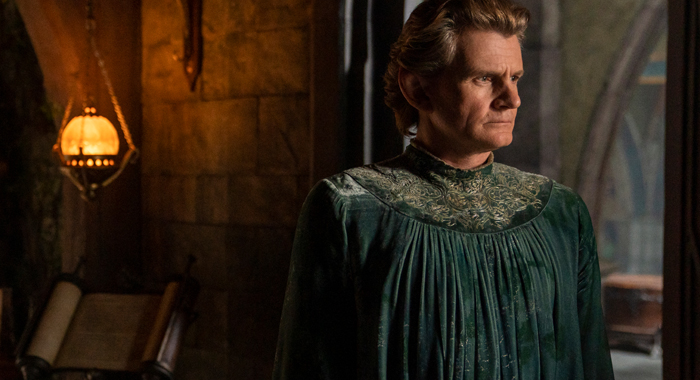
(Photo by Ben Rothstein/Prime Video)
Nevertheless, Durin still perceives something is being concealed. Early in the episode, we see progress is being made in the Dwarf-assisted construction of Celebrimbor’s forge tower and by the end, Durin is considering accepting an invitation to Lindon. Agreeing to visit the Elven capital may help him uncover why the Elves are interested in the region. But in discussing it with his father, King Durin III (Peter Mullan), the pair posit that it is Gil-Galad (Benjamin Walker) who may be concealing a plan.
Previously, we suggested Celebrimbor’s desire to have the forge completed by the spring was evidence of Sauron (in a disguised form) forcing the timetable so the Rings of Power could be crafted. But it is possible Sauron has been in contact with Gil-Galad as well. Although Tolkien provides some guidance on that front, there is room for the series to dramatize an association between Gil-Galad and a disguised Sauron. It would be interesting to hear Sauron pitch something worthy of the High King’s attention.
And that’s presuming The Stranger (Daniel Weyman) isn’t Sauron himself.
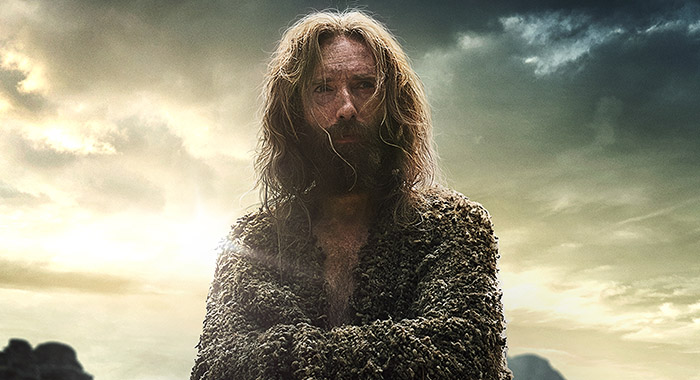
(Photo by Prime Video)
Although absent from episode 4, the Stranger still looms large in the overall narrative as he remains the most mysterious on-screen character; a riddle challenged only by Sauron’s whereabouts.
They could be one-and-the-same, of course. But as we suggested after the series premiere, Sauron is, ultimately, too prideful to present himself in such a humble guise. Tolkien wrote that Sauron assumed his fair form and feigned repentance in the wake of Morgoth’s defeat, but fled as soon as one of the Maiar chiefs ordered he return to Valinor to face judgement. His cunning knows some limit.
So, if the Stranger is not the Lord of the Rings, who is he? One option is that he is another Maia like Sauron and Gandalf. The Maiar are, for the sake of simplicity, a lower order of angel who serve and attend the higher powers known as the Valar. And based on what we’ve seen of the Stranger so far, there is some evidence to suggest he might be Gandalf. Granted, that’s entirely down to the powers he’s exhibited and his slight penchant for clumsiness. That said, Tolkien lore at least corroborates the notion that he might be a Maia.
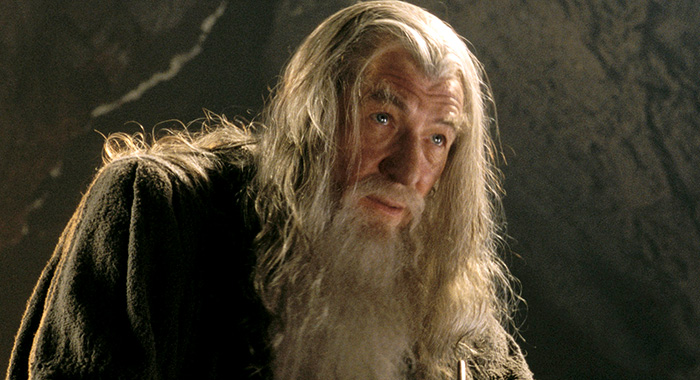
(Photo by New Line Cinema)
When Manwë, chief of the Valar, finally decided to send a detachment of Maiar to aid the Free Peoples of Middle-earth, he mandated that the fair and powerful beings be clothed in the frailer forms of old men, becoming the five Wizards. The Stranger fits that description pretty well, but does it mean he can be Gandalf? (Ian McKellen, pictured above, portrayed Gandalf in Peter Jackson’s six-film The Lord of the Rings franchise.)
At this point, we’re inclined to say no. Gandalf famously arrived by a ship sailing across the sea in the year 1000 of the Third Age, where he is immediately given a key artifact by Círdan the Shipwright. That is an aspect of lore we seriously doubt the series is interested in contradicting. Although, it is always possible the Stranger is a previously unknown attempt by Gandalf (or Olórin, as he is known in Valinor) to assist Middle-earth.
Discounting that, though, the Stranger could also be one of the Blue Wizards, of whom Tolkien wrote little beyond their names (Alatar and Pallando or Morinehtar and Rómestámo), that their mission concerned the South and East where Sauron held greater sway, and that they probably failed at their assignment (although Tolkien reconsidered their success later in his life). There are even contradictory accounts of their arrival, both in terms of when it occurred (in the Second or Third Age) and whether or not the First Age Elf hero Glorfindel returned to Middle-earth with them. And before Poppy (Megan Richards) mentioned he had rounded, human ears, we also suspected Glorfindel as a possible identity for the Stranger.
One other option is that the Stranger is a heretofore unknown sixth Wizard. Although, as that would also break the lore, consider him a proto-Wizard – a Maia clothed in a frail human body, but still containing so much power that he absorbs the heat from nearby fire. In terms of a mission, it may be as simple as scouting the Southlands and determining Sauron’s strength.
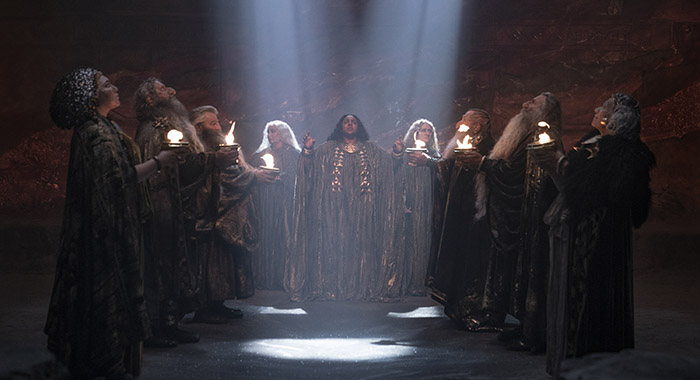
(Photo by Ben Rothstein/Prime Video)
There is one last, wild, possibility: the Stranger is Aulë. The Dwarves invoke his name both with reverence and as a curse (Aulë’s beard!) in episode 2, a reasonable enough aspect of their idiom as Aulë created the Dwarves. Chief craftsman among the Valar, he also befriended the Noldor Elves who would create the Silmarils and counted both Sauron and Saruman among the Maiar in his service. He is absolutely part of the Middle-earth story even though he disappears from the narrative early in the First Age. Of course, the speculation is easy to dismiss as there is no good reason for him to disguise himself as a confused old man. Although, he was known to be humble despite his might and ingenuity. Another point in his favor: Who better to bring Sauron back to Valinor?
Then again, we can’t ignore what Waldreg (Geoff Morrell) told Theo (Tyroe Muhafidin) about the meteor: It is a sign of Sauron’s return.
![]() 84%
The Lord of the Rings: The Rings of Power: Season 1
(2022)
streams new episodes every Friday on Prime Video.
84%
The Lord of the Rings: The Rings of Power: Season 1
(2022)
streams new episodes every Friday on Prime Video.